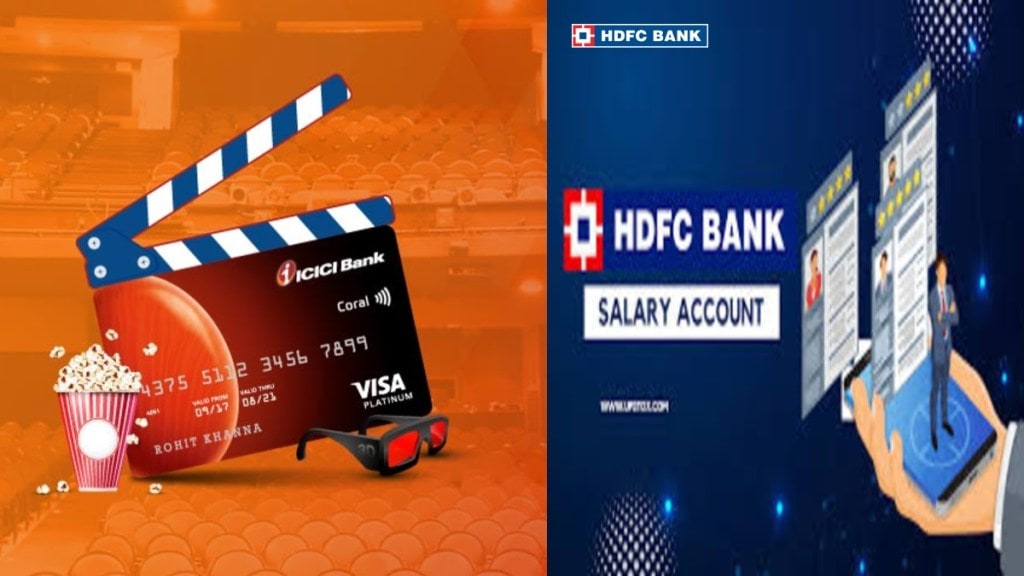The banking sector has been under significant pressure lately. The Nifty Bank Index is down nearly 4% in the past 3 months. However, some key large cap private sector banks have outperformed the Index. If we check the list of bank sector stocks, these two stocks have also delivered steady returns. HDFC Bank and ICICI Bank are two such stocks. The Q1 results for both banks have exceeded estimates, and the stocks feature prominently in the top banking picks of most key brokerage houses.
A closer look at the individual stock price of both the banks reveals some interesting facts. Here is a quick comparison of the key parameters of the two leading private banks, ranging from share price movement to margins and earnings performance-
HDFC Bank Vs ICICI Bank: Share price performance
The HDFC Bank share price is down 5% in the last 1 month, but the stock has delivered 10% returns in 6 months and is up over 17% in the last one year.
The ICICI Bank share price is down nearly 6% in the last 1 month. On a 6-month basis, the shares have delivered almost 16% returns and on a 1-year basis, the stock is up 13.5%.
HDFC Bank Vs ICICI Bank: Asset quality stable
HDFC Bank has maintained strong asset quality with the net NPA ratio at 0.4% in FY25 and 0.5% in Q1FY26. Robust underwriting and a risk-calibrated lending approach have helped maintain these NPA levels. The bank holds substantial provisions, including Rs 21,400 crore in floating provisions and Rs 15,200 crore in contingent provisions.
It has used the proceeds from the stake sale in HDB Financial to fortify its balance sheet. The bank’s asset quality remains healthy across the corporate, rural, and agriculture segments. This has also helped in keeping the credit costs at 50 bps over the medium term.
The Q1FY26 net NPA ratio for ICICI Bank was 0.41%. This is a slight improvement from the 0.43% net NPA in Q1FY25. This indicated stable asset quality for the bank, and it continues to carry a contingency provisioning buffer of Rs 13,100 crore (1% of loans).
HDFC Bank Vs ICICI Bank: How do the margins stack up?
The recent rate cut has led to some margin compression for both HDFC Bank and ICICI Bank.
HDFC Bank clocked a 10 bps QoQ NIM contraction at 9.5% in Q1FY26. The bank has also undertaken some strategic portfolio shifts towards higher-yielding retail assets and replacing costly borrowings with deposits to improve margins. The short-term NIM compression due to RBI’s rate cut is expected to be offset by savings account and term deposit rate cuts in FY26.
As per estimates by Motilal Oswal, “with only 45% of loans linked to the repo rate and the ongoing reductions in expensive borrowings, HDFC Bank is well positioned to manage the margin impact in the medium term.” Its continued focus on “enhancing CASA ratio and asset mix should support margin recovery to 3.66% by FY27,” they added.
ICICI Bank clocked a rather controlled NIM decline of 7 bps QoQ to 4.34% in Q1FY26 compared to a double-digit contraction reported by many peers. The bank continues to focus on superior risk-adjusted returns, underpinned by prudent underwriting and strong credit discipline.
Overall, the NIMs are expected to remain under some pressure in Q2 due to the cumulative repo rate cuts by the RBI. Margins in Q3/Q4 are expected to see relatively lower volatility, as per most brokerage reports.
Motilal Oswal indicated that “the bank’s investment in technology has resulted in consistent productivity gains and steady improvement in cost ratios.” They see continued improvement in asset mix and limited NIM compression.
HDFC Bank Vs ICICI Bank: Slippages a concern?
HDFC Bank’s gross slippages have come in at Rs 9,000 crore (1.5% annualised) vs. Rs 7,500 crore last quarter and Rs 7,900 crore in Q1FY25. Though Q1 tends to report seasonal slippage in agri loans, gross slippage was broadly steady for HDFC Bank. The increase in net slippage in Q1FY26 to Rs 4,800 crore Vs Rs 4,400 crore in Q1FY25 led to an uptick in credit costs.
ICICI Bank’s gross slippage was at Rs 6,200 crore in Q1FY26 (2% annualized) Vs Rs 5,100 crore last quarter and Rs 5,900 crore in the same quarter in FY25 (2.2% in Q1FY25). Though Q1 tends to see seasonal agri loan slippage, the Bank’s gross slippage was broadly steady. The net slippage increased to Rs 3,000 crore vs. Rs 2,600 crore in the same quarter last fiscal. This has partly led to an uptick in credit costs (54 bps Vs 44 bps last year)
HDFC Bank Vs ICICI Bank: Brokerage views and target price
Key brokerage houses see significant upside for both stocks. The most recent Jefferies report sees over 20% upside for both stocks, with the two featuring prominently as top picks. Motilal Oswal too sees upside in the range of 14-17% for both the banks, and these two are among their top picks in the overall financial space.
Jefferies and Motilal Oswal have a Buy on HDFC Bank. Jefferies has a target of Rs 2,400 per share, while Motilal Oswal’s price target is Rs 2,300 per share.
ICICI Bank is a preferred Buy for both Jefferies and Motilal Oswal. Jefferies’ target price for the stock is Rs 1,760 per share, while Motilal Oswal has Rs 1,670 per share as the target price.

